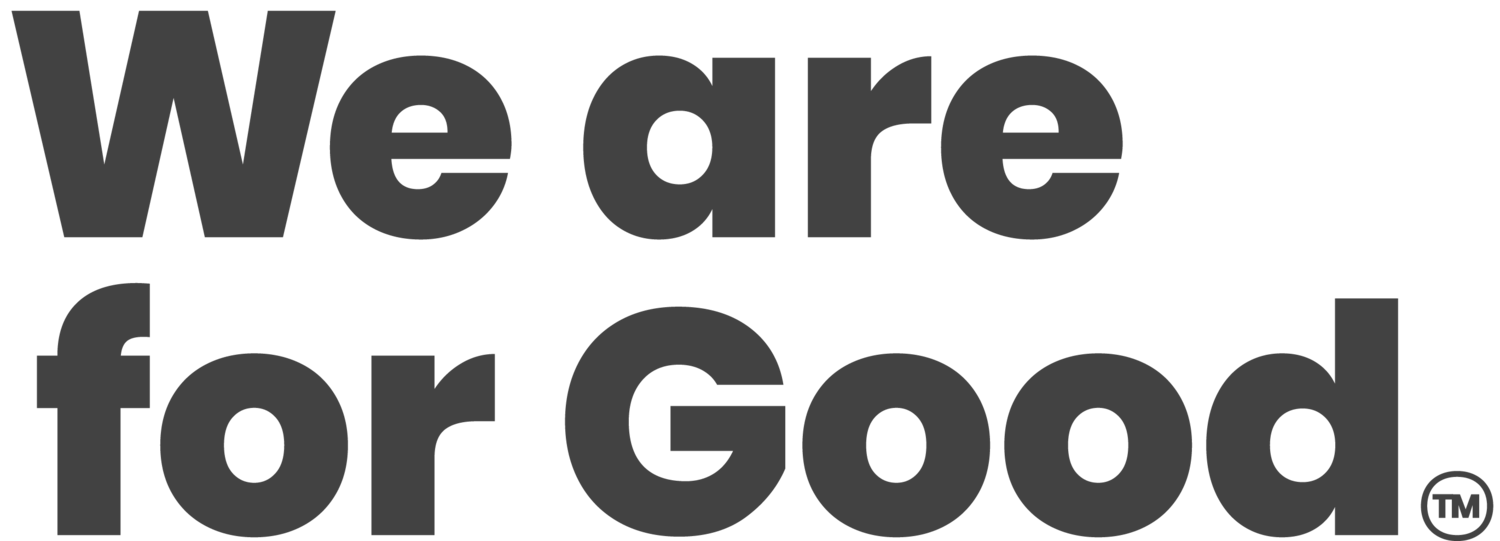A lot of work goes into building a great nonprofit website. First, you must select the right content management system (CMS) and then get the visual design and feel of the site just right. Next, you add valuable content, tools, and interactive elements that make the website useful and engaging for visitors.
Once you’ve gone through this process, it can be tempting to forget about your website for a while. After all, you likely have other operations that need your attention, whether that means working on another marketing channel or planning an upcoming fundraising event.
However, even the best nonprofit websites need consistent maintenance to continue working properly. If you’re new to this, don’t worry—we’re here to help you out! Adopt a growth mindset as we dive into the common nonprofit website issues we regularly see and the steps you can take to avoid them.
1. Security Breaches
When it comes to maintaining your nonprofit’s website, security should be your top priority. Without the right security measures in place, your organization may face the following problems:
Putting your supporters’ sensitive information at risk (e.g., contact details, financial information, etc.)
Losing time to solving security issues, affecting your ability to engage with supporters, gather online donations, and more
Damaging your organization’s reputation as you jeopardize your supporters’ trust
Getting entrenched in legal issues like lawsuits or regulatory fines as sensitive information is compromised
Clearly, security vulnerabilities can lead to big problems for your nonprofit and everyone who supports your cause, so prioritize security above all else.
Preventing This Website Issue
Luckily, there is a lot you can do to protect your nonprofit website and prevent breaches. Here are a few steps to ensure you have a safe site:
Ensure HTTPS is in your URL. HTTPS is used to securely connect your site visitors’ browsers and your web server. To use it, you’ll need an SSL certificate, which your web host should offer for free. To add that certificate to a WordPress site, use the Really Simple SSL plugin.
Use a secure payment processor. Ensure the tool you’re using to collect donations on your website is set up to keep your donors’ information safe by encrypting it when they enter it into your donation form.
Encourage employees and website users to practice good password hygiene. If your website offers a password-protected member, volunteer, or staff portal, encourage individuals to use strong passwords and remind them to change those passwords regularly. Take your security measures to the next level by requiring two-factor authentication (2FA).
Additionally, train employees in security best practices and policies. For example, make sure employees know not to share sensitive website information like passwords via email.
2. Website Downtime
Have you ever tried to visit a website to read an article or shop for an item only to see a message like, “This site can’t be reached” or “Page not found”?
This means a website is experiencing downtime, which happens for various reasons, from broken code to update issues or even a big spike in site traffic.
Preventing This Website Issue
While downtime isn’t something that you can necessarily prevent, the important thing is to have a plan in place for when (not if) your website goes down. After all, the sooner you get it up and running, the sooner it can continue educating and engaging your audience, indicating to the world that your nonprofit is still active and working toward its mission.
Here are some steps to include in your website downtime plan from the Cornershop Creative website maintenance guide:
Describe what you’re seeing. Check your website using different devices and networks to see if it’s down across the board. Even if you don’t know what the problem is, identify what the screen looks like when you try to access your site—it might display an error message, or it may just be blank.
Ask for help. In some cases, you may be able to solve the problem on your own. If the problem seems like it’s outside of your wheelhouse, be sure to promptly reach out to your tech support team or your web host.
Explain how urgent the instance of downtime is. Only you know how urgent your problem is. If your site problem needs to be a top priority (for example, if you’re running an online fundraiser and having your site down will significantly affect your progress), explain this to your tech support contact. This can sometimes help your report reach the top of the to-do list.
Keep communication flowing. Alert your team when your website is down, and have a process to alert your community of supporters if it’s down for longer than expected. Provide an estimated timeline for when your site will be back up and provide updates. Also keep checking in with your tech support contact.
Being prepared will make instances of website downtime much less anxiety-inducing. Write out the process you’ll follow when your site goes down into a digestible document so that you have a resource to turn to when you need it.
3. Broken Site Elements
Sometimes it won’t be your entire site that stops working but rather one or two elements within your site. After all, development additions, plugin changes, or platform updates can all affect key tools on your website, such as your:
Site menus
Donation tools
Event or volunteer registration forms
Links
Videos
Images
Special features, such as location tools or resource libraries
For example, say you recently started using a new form builder for event registrations. If the provider updates the tool, the old version could break and stop working, preventing people from registering for your upcoming events.
Preventing This Website Issue
One of the simplest (albeit time-consuming) ways to ensure everything continues to work on your website is to visually review and test your website regularly. For example, test your donation form, check that your videos play correctly, and click on links to ensure they take you to the right places.
If you want to be more efficient with testing out your site elements, you also have options. You can leverage platforms like Ghost Inspector to create automatic tests for your website to ensure everything is working or Broken Link Checker to identify links that don’t work.
4. Poor Navigation
Research shows that 94% of users feel that easy navigation is the most important feature of a website. So what happens when a visitor lands on your website and has difficulty finding what they’re looking for? They’ll likely click away without exploring your blog, giving to your online fundraiser, or checking out your volunteer opportunities. Or worse, they may not visit your website again.
Of course, you can take steps to set up the information architecture of your website in a logical, intuitive way when you initially design your website. However, you may find it becomes messy and convoluted over time as you add additional content, resources, and tools.
Preventing This Website Issue
To prevent your site navigation from becoming confusing, it’s essential to prioritize clarity and simplicity. Here are some specific tips to help you apply both of these principles to your site:
Organize your site logically. Before you build out a navigation menu, ensure that your website reflects your organization’s main priorities and that your pages are ordered in a way that makes sense. For example, your homepage should give a broad overview of your mission and all your site offers, immediately directing visitors to other important pages such as your donation page, events calendar, and blog.
Simplify the menu structure. Limit the number of top-level menu items on your website to 5-7 core categories. You can nest additional important pages underneath these categories. For example, you might include a “Team Members” page under your “About Us” category.
Use clear and descriptive labels. Don’t make your visitors guess what menu item labels mean. Keep the text short and clear so people know what to expect when they click on it. For instance, “Donate” may be a more straightforward choice for your online giving page than “Take Action.”
Add a search functionality. Sometimes, website visitors know exactly what page or tool they want to access. A visible search bar can empower them to quickly find the specific item they want, improving their user experience.
Test navigation on mobile devices. Your navigation menu should be responsive and work well on mobile devices. Test it out to ensure it resizes content properly and is easy to tap.
Revisit your website’s navigation and information architecture regularly to ensure they make sense. You can even ask staff members or volunteers to explore your site and provide feedback to identify issues you may not be able to see yourself.
5. Outdated Information
You want your website to be a trustworthy source of information for both current supporters and website visitors who look up your cause or stumble upon your organization through sheer luck. After all, your website is your internet outpost, so it should be an educational resource for learning about your cause on top of serving as a marketing and fundraising tool.
While you should ideally verify all information on your website, you should pay special attention to these key pieces of information:
Your mission and vision: If your mission has changed slightly over time, update the mission and vision language on your website. All foundational statements should align with the programming and services represented on other parts of your website.
Your annual report and financial information: Stay accountable to your supporters by offering the most recent information about your impact and financial situation. Keep the most recent version of your annual report and File 990 form on your website.
Any time-sensitive announcements: In 2025, it won’t do your website visitors much good if you’re still advertising the virtual version of your golf fundraiser from 2020. Ensure any event information or announcement containing a date is correct and relevant for your current audience.
Your contact information: Your website visitors should always be able to reach your team with questions about your cause, campaigns, or volunteering opportunities. Keep your contact information up-to-date (and respond to messages or calls promptly).
Keeping this information updated can help your nonprofit maintain its public image as a reliable and active organization that is invested in getting people to help make its vision for a better future a reality.
Preventing This Website Issue
You can be keep the information on your website current in a few ways, such as:
Developing a plan to regularly review and update your website content
Paying attention to pages that change the most (like your “Events” page or “Volunteering Opportunities” page)
Taking action when someone brings outdated information to your attention
Additionally, it can help to regularly post new content. Set up a blog and a consistent publication schedule so that your website visitors can count on you for fresh content on a regular basis.
By prioritizing the website maintenance tasks outlined above, you can prevent common website issues and ensure that your site continues to be a great resource for your community. Use this guide as a starting point, and remember to turn to a nonprofit website design agency if you need further support!

Ira Horowitz
Ira Horowitz, Cornershop Creative
With 15 years’ experience, Ira is an expert in nonprofit online communications and online fundraising. His work has resulted in increased funds and resounding supporter engagement for hundreds of organizations.
Ira oversees our project management team and works with clients to provide our clients with the best possible final product. He also manages all of our strategic engagements and helps guide nonprofits to determine their long-term strategy goals for online communications.

Ira Horowitz, Cornershop Creative








